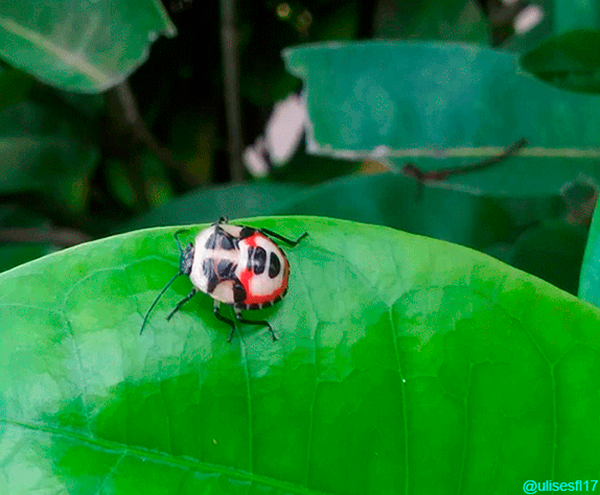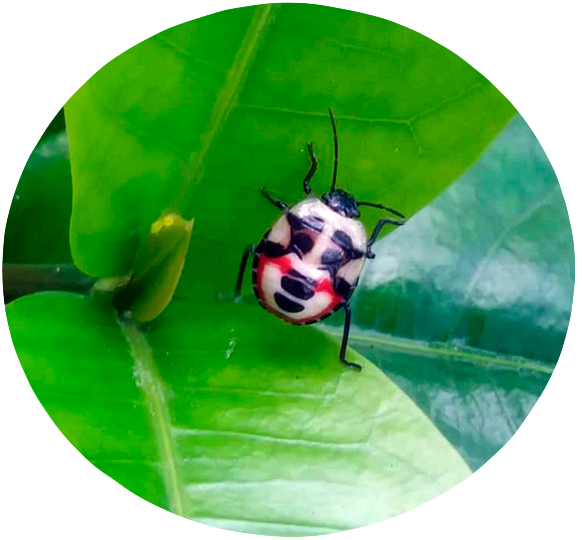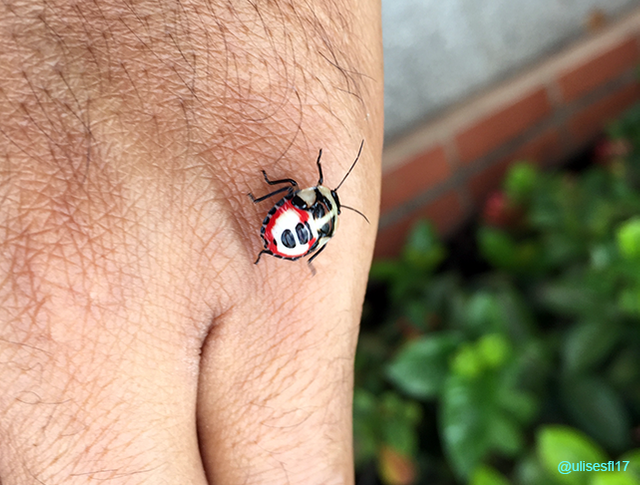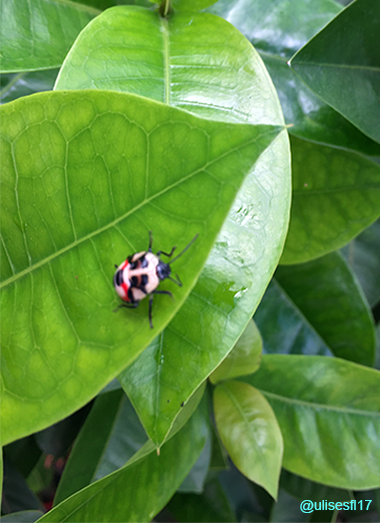Coccinellidae as biological controller in crops 🐞
Ulises Flores
8/11/2019
Hello Dear Readers!
In the front garden of the university I was struck by a small colorful insect that moved very quickly between the leaves of the plants, I stopped to observe better and I realized that it was a tiny beetle commonly known as a ladybug, a species of coleoptera that comprises the family Coccinellidae.
Coleoptera Coccinellidae (Ladybug)

It is a noble insect with an average length of 10 millimeters, characterized by its hemispherical dorsal body with short legs that are attached to the lower edge of its flat belly, has a colorful tegument that protects its outer part, antennas, head and legs are black, while the ribbed tissue of its wings is dotted with black spots.

The tegumentary system is equipped with an effective defense system against predators and invading agents, as the presence of bright and striking colors warns that it is protected by a powerful mechanism generator and dispenser of poison glands, this biological system of protection that have some plant and animal species is called aposematism.

Ecological balance and control

This noble insect plays a fundamental role in the trophic chain, its diet includes a varied microfauna that depending on the point of view and interest to be interpreted, is characterized as a biological controller of insects or pests, as it consumes aphids (they are not fleas), which feed on tender leaves and some are virus carriers. Also, they are predators of fly larvae (Muscidae), cochineal pests that are harmful parasites that are fixed on the leaves and stems of plants in crops, mites and other insects harmful to agricultural activity.
Today, many farmers and lovers of agronomic activity in gardens, orchards and other forms of crops use Coccinellidae species for biological pest control. Its effectiveness has been demonstrated in fruit plantations of orange, lemon, soursop, some palms, oilseeds and grasses.
 |
 |
The use of predatory insect species in agriculture is an old practice, in recent years has been taking more interest and increasingly promoted ecological practices to avoid the use of biocides and other conventional agents that degrade soils, pollute water, air, eliminate biological agents that control biodiversity, likewise phytosanitary mechanisms often represent a problem for human health.

The care of the environment and the practice of good ecological relations is everyone's duty.
References
- Common name: ladybirds, lady beetles, ladybugs [of Florida]
scientific name: (Insecta: Coleoptera: Coccinellidae) link - How to control pests and diseases? Biological vs. chemical link
- The Functional Significance of Aposematic Signals: Geographic Variation in the Responses of Widespread Lizard Predators to Colourful Invertebrate Prey link
Resources
The photographs were taken with digital camera of mobile equipment Iphone 6 plus




Hello,
Your post has been manually curated by a @stem.steem curator.
We are dedicated to supporting great content, like yours on the STEMGeeks tribe.
Please join us on discord.
Thank you for the recognition and support of this publication.
Greetings
Biological controls are awesome when they work and evolve naturally. And ladybugs do. Lots of introduced control species don't, and become dominant to the point of destroying fragile ecosystems. Generally not a fan of introducing species & thinking we grasp all the ramifications. Let Mother Nature sort it naturally, I say.
I've never actually seen a white and red one though!! Nice!
Leading the curation trail for both @ecotrain & @eco-alex.
Together We’re Making This World A Better Place.
Click Here To Join the manually curated trail "@artemislives" to support quality eco-green content.
Nature and all its processes are perfect, thus ensuring balance on the planet.
Thank you for your timely and valuable comment, as well as for the support.
Good morning.
Congratulations, your post has been upvoted by @dsc-r2cornell, which is the curating account for @R2cornell's Discord Community.
Thank you for your recognition and support of this publication.
We loved having ladybugs in our garden when we had a permaculture food forest growing at the front of our house.
We planted some different types of flowers to attract them, and it sure worked. We got so excited when we saw the first one!
The knowledge put at the service of nature contributes to the balance and sustainability of biodiversity on the planet, no matter how small the action, is a beautiful work, for example what you are doing in the company of your family.
Thank you for commenting
I love to see a ladybug in my garden! I've had major aphid issues while growing kale and have observed a ladybug helping with that.
Their role in maintaining the ecological balance in ecosystems is truly interesting; your valuable comment and testimony are worthy of thanks.
Thank you for commenting